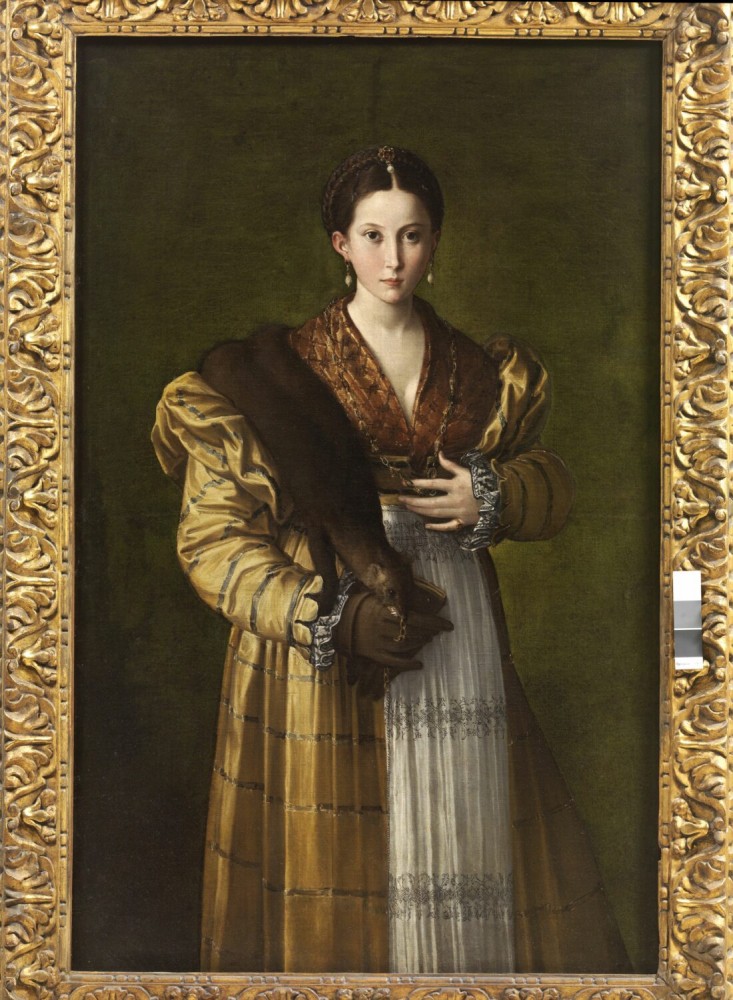
Francesco Mazzola, known as Parmigianino, Portrait of a Young Woman, also known as Antea. Around 1535.
Oil on canvas, 138 x 86 cm.
Museo e Real Bosco di Capodimonte © Luciano Romano
Reasserting the importance of collaborative efforts among European museums, the Musée du Louvre has formed a partnership of unprecedented scope with the Museo di Capodimonte for 2023.
The royal palace (reggia in Italian), which once served as a hunting lodge for Naples’s Bourbon monarchs, is now one of the largest museums in Italy, as well as one of the most important picture galleries in Europe in terms of both number and quality of works. Capodimonte is one of the few museums in Italy whose collection covers all schools of Italian painting. It also houses the second largest department of drawings (after the Uffizi) and a remarkable collection of porcelain.
Approximately seventy major masterpieces from Capodimonte will be exhibited in three different places in the Louvre: the prestigious Grande Galerie will display a stunning selection of works from two of the world’s foremost collections of Italian paintings; the Salle de la Chapelle will present the history and diversity of the Capodimonte collection, assembled for the most part by the Farnese and Bourbon families; and finally, the Salle de l’Horloge will showcase four outstanding cartoons (preparatory drawings) from the former Farnese collection: one by Michelangelo, another by Raphael, and two by members of their circles. These will be on display alongside the Louvre’s drawings by Raphael or his workshop.
Extending beyond the Louvre’s galleries, an ambitious programme of cultural events will lend this occasion the dimension of a veritable Neapolitan season in Paris.
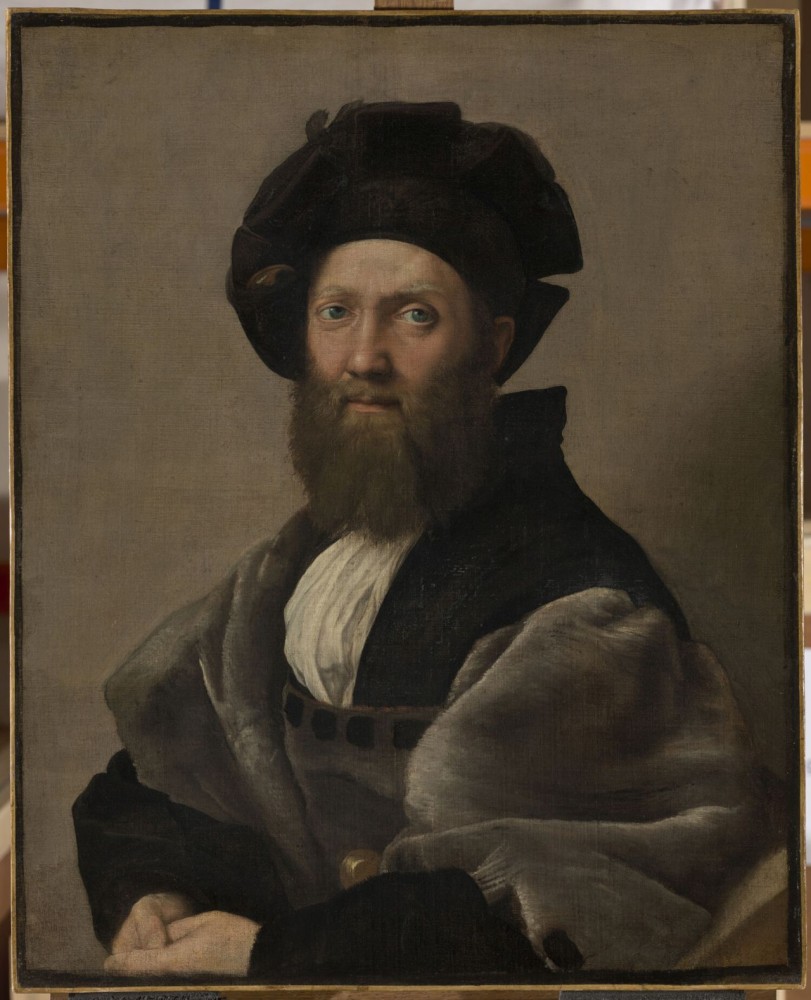
Raffaello Sanzio, known as Raphael, Portrait of Baldassare Castiglione. 1514–1515.
Oil on canvas, 82 x 67 cm.
Musée du Louvre © RMN-Grand Palais (Musée du Louvre) / Michel Urtado
In the words of Laurence des Cars, presidentdirector of the Louvre, ‘An exceptional event is scheduled at the Louvre in 2023: the finest masterpieces from the Museo di Capodimonte will join those of the Louvre for the first time, at the heart of the Paris museum. This six-month “Neapolitan season” in Paris will be accompanied by a diverse programme of music and films. The Louvre and the Museo di Capodimonte have many things in common and much to exchange: both museums were originally royal palaces, their collections were inherited from the most eminent monarchs, and they are symbols of the historical links between France and Italy. I would like to express my
sincere thanks to Sylvain Bellenger, director of the Museo di Capodimonte, who has honoured us by accepting our invitation. This exceptional and unprecedented partnership is a perfect example of my vision for the Louvre’s future role in Europe and museums’.
Sylvain Bellenger expressed his honour at the invitation from the president-director of the Louvre as follows: ‘This exhibition will bring enormous prestige both to Naples and to the Museo e Real Bosco di Capodimonte. The history of the museum is inextricably linked to that of the kingdom of Naples, just as the history of the Louvre is inextricably linked to the French Revolution. Many visitors will already be familiar with some of the masterpieces in the Capodimonte collection – such as Danae and the Portrait of Pope Paul III by Titian, and Antea by Parmigianino – as they feature in art history textbooks; however, their connection with the Capodimonte may come as a surprise, as the museum is famous among art lovers but still unknown by the public at large. Although the French have a historic attachment to Naples, visitors to Pompeii do not necessarily include the Capodimonte in their modernday Grand Tour, even though it is one of Europe’s foremost museums’.
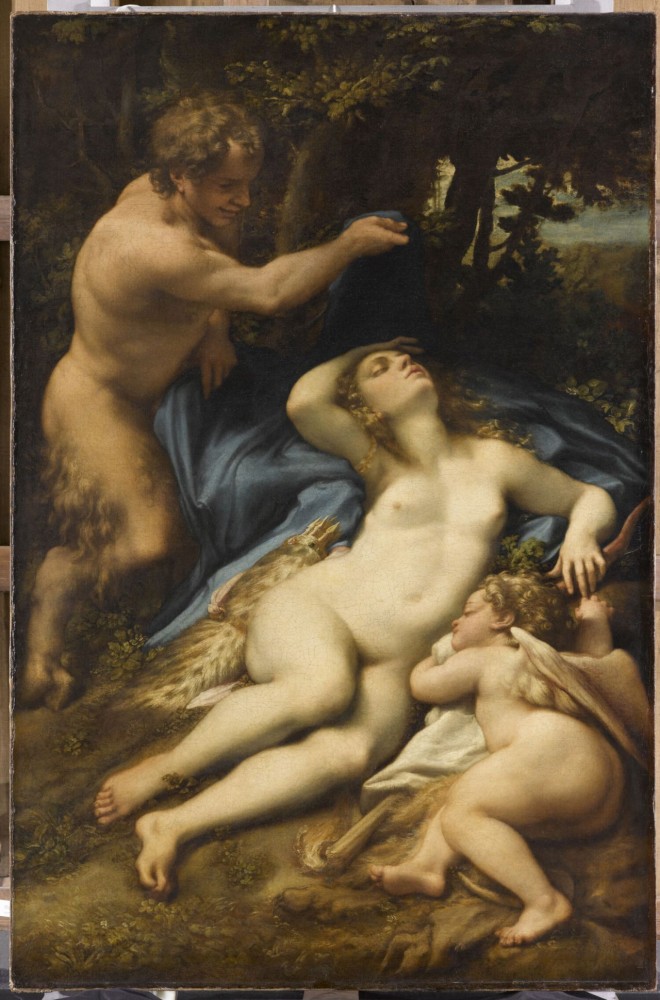
Antonio Allegri, known as Correggio, Venus and Cupid with a Satyr, also known as Jupiter and A ntiope. 1524–1527.
Oil on canvas, 188 x 125 cm.
Musée du Louvre © RMN-Grand Palais (Musée du Louvre) / Franck Raux
Exhibition curators: Sébastien Allard, director of the Department of Paintings, Musée du Louvre, and Sylvain Bellenger, director of the Museo di Capodimonte.
Associate curators: Charlotte Chastel-Rousseau, curator in the Department of Paintings, Dominique Cordelier, curator in the Department of Prints and Drawings, Musée du Louvre; Alessandra Rullo, curator, Patrizia Piscitello, curator, Carmine Romano, curator, Museo e Real Bosco di Capodimonte.
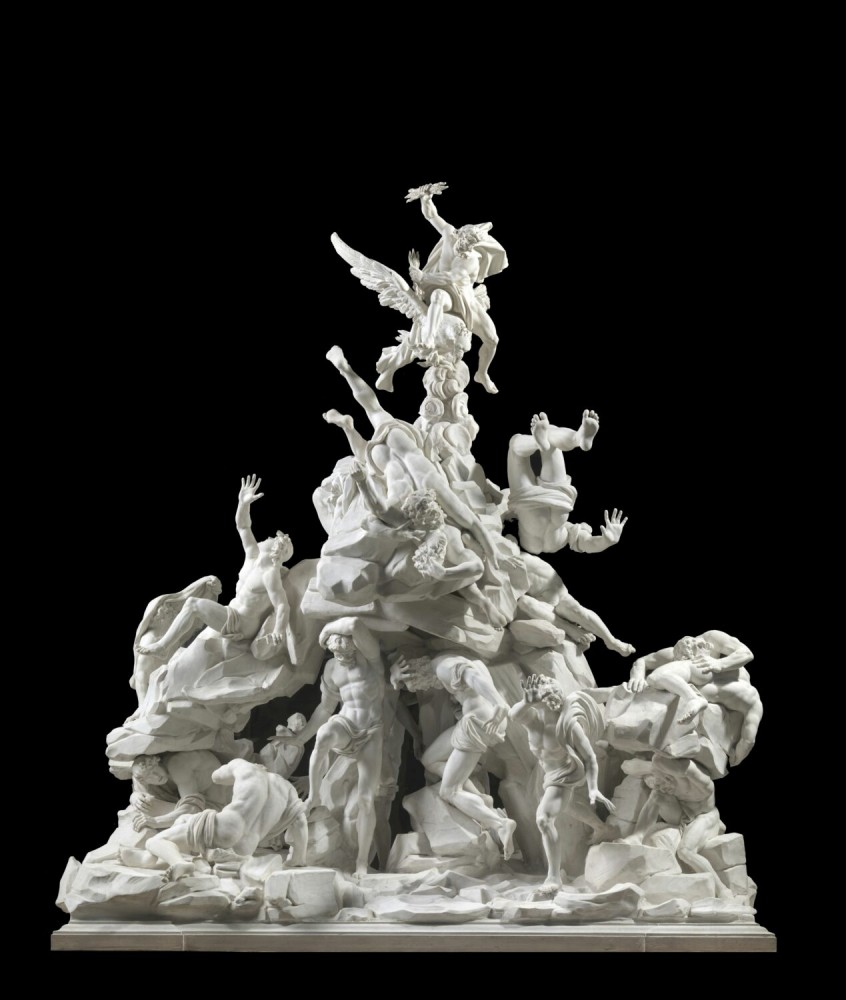
Filippo Tagliolini, The Fall of the Giants. 1785 and following years.
Biscuit porcelain from the real Fabbrica Ferdinandea. H. 162 cm, basis: 151 x 96 cm.
Museo e Real Bosco di Capodimonte © Luciano Romano
Salon Carré, Grande Galerie and Salle Rosa (Denon wing, Level 1)
The Musée du Louvre and the Museo de Capodimonte decided to join forces to mount a special exhibition showcasing masterpieces from the two museums. This exceptional six-month event will provide a unique insight into Italian painting from the 15th to the 17th century and offer a fresh perspective on the two collections.
The display will feature thirty-one paintings from the Museo di Capodimonte, considered some of the greatest Italian masterpieces. They will resonate with the Louvre’s collection of paintings by artists including Titian, Caravaggio, Annibale Carracci and Guido Reni, and shed light on Italian schools that have little or no representation in the Louvre – particularly the remarkable Neapolitan school, characterised by the dramatic and expressive style of artists such as Jusepe de Ribera, Francesco Guarino and Mattia Preti.
Exhibition highlights will include a poignant painting of the Crucifixion by Masaccio (a major artist of the Florentine Renaissance who is not
represented in the Louvre’s collections), a large history painting called Transfiguration of Christ by Giovanni Bellini, without equivalent in the Louvre, and three of the finest paintings by Parmigianino, including his famously enigmatic Antea. The display of these works alongside the Louvre’s paintings by Correggio will undoubtedly be one of the high points of the exhibition.
Salle de la Chapelle (Sully wing, Level 1)
The diversity of artworks in the Museo di Capodimonte collection stems from its singular history. Before the unification of Italy (with the annexation of the Kingdom of the Two Sicilies in 1861), the Farnese, Bourbon and Bonaparte-Murat dynasties all contributed significantly to the creation of this impressive collection.
The fabulous loans on show in the Salle de la Chapelle will introduce visitors to the diversity of the Capodimonte collection. They include such major paintings as Titian’s Portrait of Pope Paul III and his Grandsons and El Greco’s Portrait of Giulio Clovio, together with some spectacular sculptures and objets d’art. Among the latter are the Farnese casket (which, like the golden salt cellar made by Benvenuto Cellini for King François I, is one of the most precious and refined artefacts by Renaissance goldsmiths), and Filippo Tagliolini’s extraordinary biscuit porcelain group, The Fall of the Giants. The overall display reflects the various golden ages of the Kingdom of Naples.
Salle de l’Horloge (Sully wing, Level 2)
The department of drawings in the Museo di Capodimonte boasts over 30,000 works of art. Some of these treasures once belonged to the humanist scholar Fulvio Orsini – librarian to the ‘Great Cardinal’ Alessandro Farnese, a grandson of Pope Paul III – and later to Cardinal Odoardo Farnese. Orsini compiled one of the greatest Italian collections to give drawing its rightful place. This inspired and enlightened approach led him to acquire two superb cartoons, believed at the time to be works by Raphael and Michelangelo: Moses before the Burning Bush by Raphael and Group of Soldiers by Michelangelo, preparatory cartoons for the decorations in the Vatican and now recognised as rare drawings by the masters themselves. The cartoons for The Madonna of Divine Love and Cupid Kissing Venus were long thought to have been made by members of the two great artists’ circles.
These extremely rare works will be on display among famous cartoons from the Louvre’s Cabinet des Dessins, including the one for the figure of God the Father in Raphael’s Disputation of the Holy Sacrament, and the cartoon for Moderation by Raphael’s closest pupil and collaborator, Giulio Romano, which has recently undergone conservation treatment.
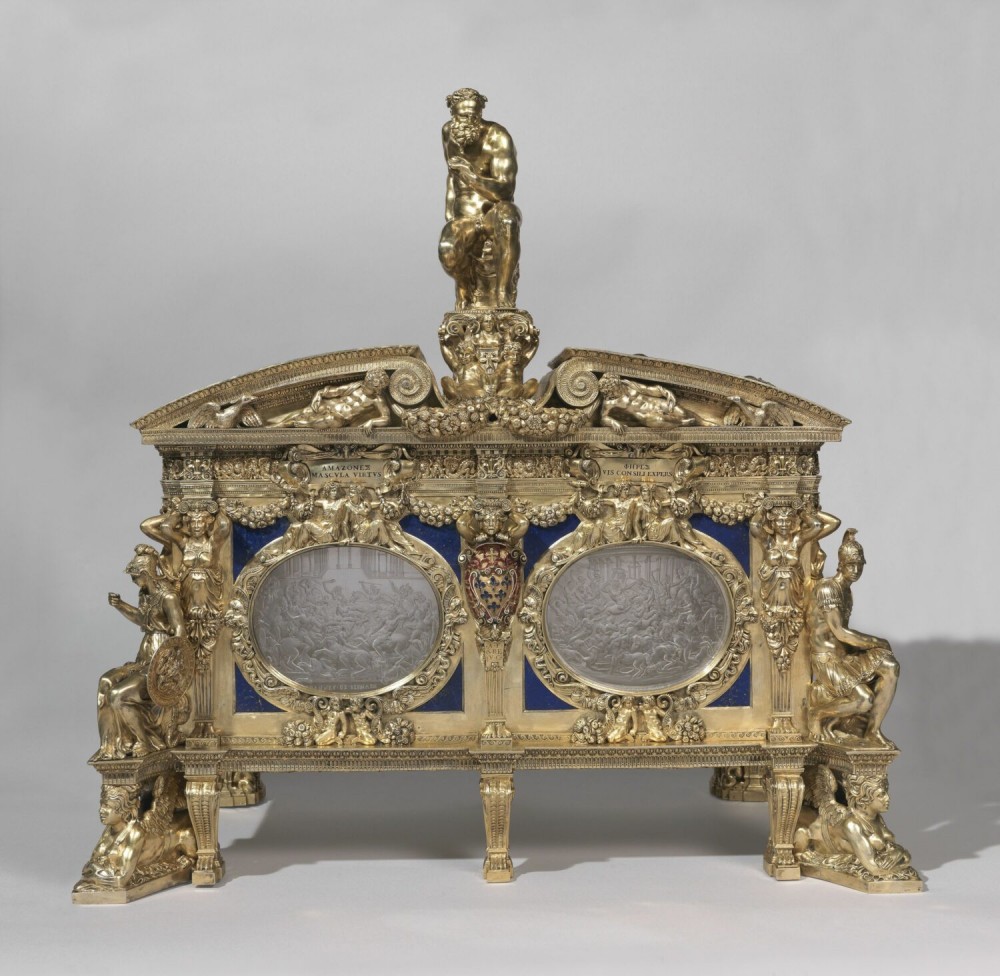
Manno di Bastiano Sbari and Giovanni Bernardi, Farnese Casket (Cassetta Farnese). 1548–1561.
Gilded, embossed and chiselled silver, carved rock crystal, enamel and lapis lazuli, 49 x 42 x 26 cm.
Museo e Real Bosco di Capodimonte. By courtesy of the Italian Ministry of Culture, Museo e Real Bosco di Capodimonte
Events related to the exhibition
For the duration of the exhibition, the Louvre will host a full and diverse programme of concerts, performances and festive events of various kinds in the museum’s auditorium and galleries, to celebrate the rich cultural past of Naples and its inspirational potential for the artists of today. This Neapolitan season will feature, among others, the orchestra and singing school of the Teatro San Carlo in Naples – one of the world’s most prestigious lyric theatres. Writers, filmmakers and actors will also be invited to the Louvre for a film festival dedicated to ‘Naples through filmmakers’ eyes’.
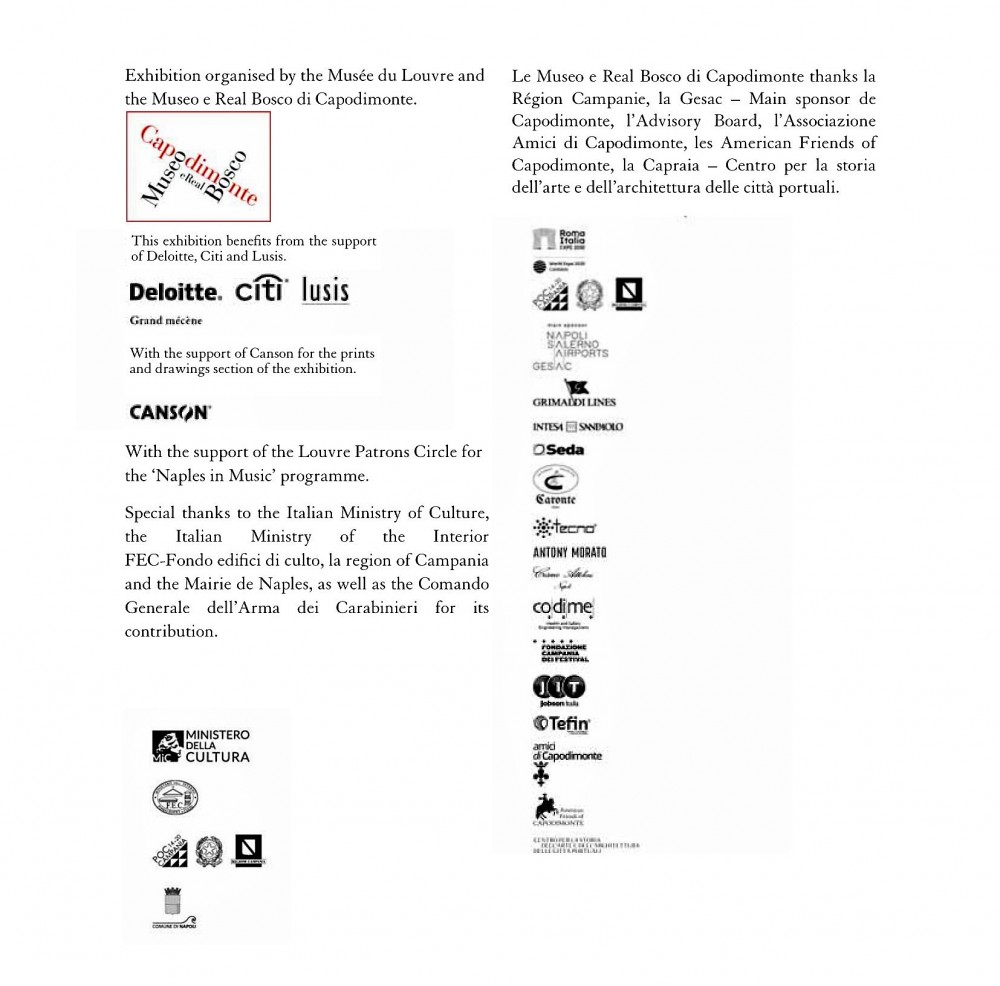
https://www.louvre.fr/en/what-s-on/exhibitions/naples-in-paris

